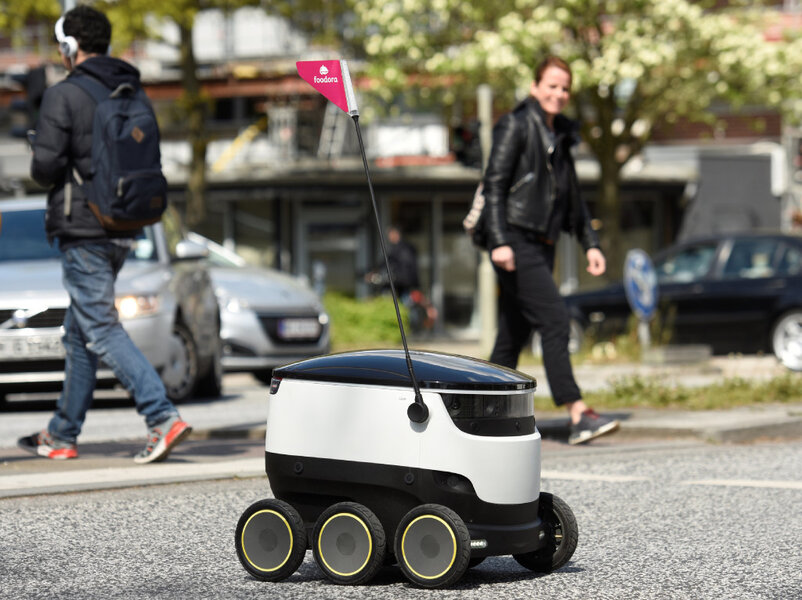When fear of automation is too robotic
Loading...
This spring, a team of agricultural engineers in Britain began to plant barley seeds in a field with what they claim is the world’s first autonomous tractor. In August, the machine, controlled by a computer from afar, will then harvest the crop. Not a single farmer will toil the land.
Rather than fear this latest example of work-replacing robots, many farmers welcome it. The experimental machines, unlike human-driven tractors, will be lighter on the soil. And they will bring other benefits in efficiency and profits.
Such a response runs counter to the drumbeat of fear about the long-range impact of robots and artificial intelligence. In his farewell address, President Barack Obama warned of the “relentless” pace of automation in allegedly eliminating jobs. In February, the European Union took up a proposal to tax companies for any jobs lost to robots. Even techno-optimist Elon Musk of Tesla warns of a “massive social challenge” from future automation.
Such fear is hardly new. Decades ago, famed economist John Maynard Keynes predicted mass unemployment from technology. He and others were right to a degree. Workers in areas where factories have switched to robots have been dislocated. Many of them were a major source of votes for Donald Trump. But such a localized impact should not distort the larger picture of progress – and especially the record 86 months of nonfarm job growth in the United States. Two recent studies paint a hopeful picture of automation’s continuing promise.
One study, published this month by the National Academy of Sciences, looked at the probable impact of information technologies. The conclusion from an academy panel: “We expect new job opportunities to emerge as increasingly capable combinations of humans and machines attack problems that previously have been intractable.” In addition, Americans will see a boost in income, wealth, shortened work time, and new goods and services.
The other study, from the Washington-based think tank Information Technology and Innovation Foundation, looked at the dislocation and creation of occupations from 1850 to 2010 using US Census data compiled by the University of Minnesota. It came to a very counterintuitive conclusion about the impact of technology: In the past two decades, the level of occupational churn – or the rate at which some occupations expand while others contract – is at a historic low. The rate is 38 percent of that from 1950 to 2000, and 42 percent of the levels from 1850 to 2000. If anything, the United States is not being innovative enough, a fact reflected in the low rate of worker productivity in recent years.
That historical perspective suggests public leaders should not play to the fear of automation but instead encourage the development of it, even as they also help workers with out-of-date skills adjust to a changing economy. Americans will not support investments in education and research if they are told the worst about technology.
The public may be ahead of the doom-sayers. In a Pew poll last year, two-thirds of people agreed that their own jobs were secure even though they believe robots are taking over much of the work done by humans. Like farmers in Britain looking at the advent of robot tractors, they see the upside and ignore the fear.





